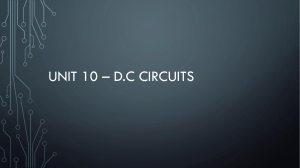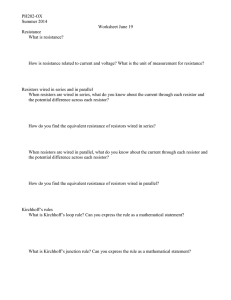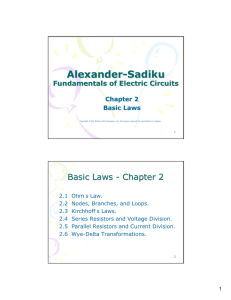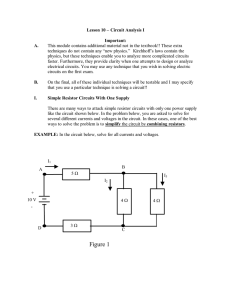Final Exam - Study Guide
advertisement
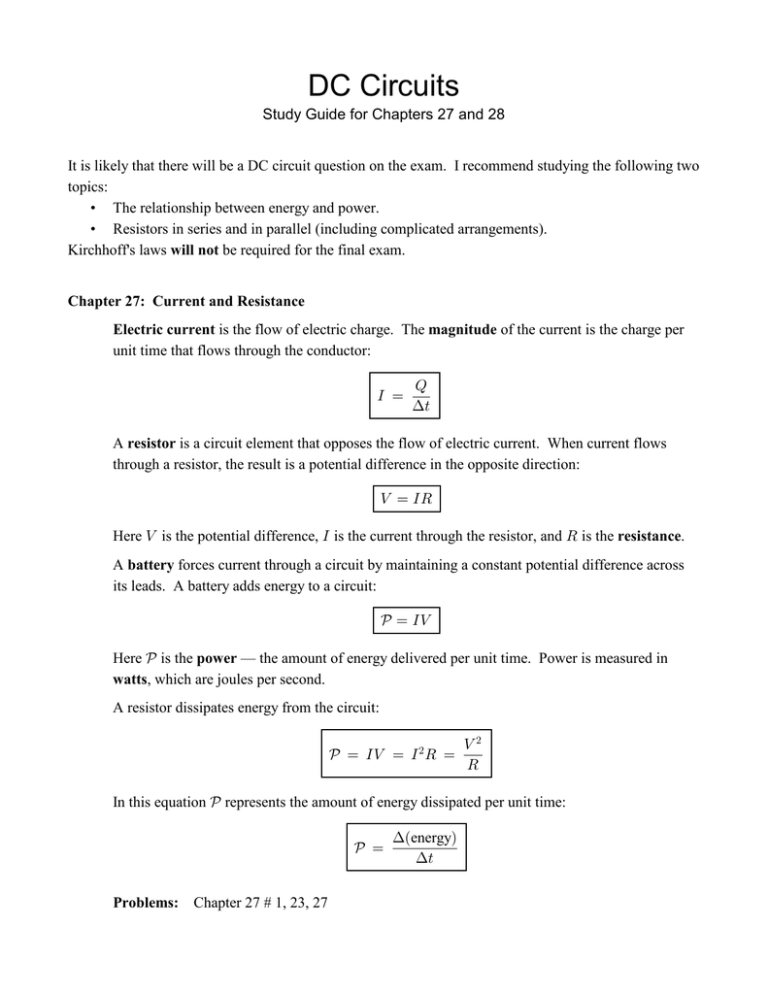
DC Circuits Study Guide for Chapters 27 and 28 It is likely that there will be a DC circuit question on the exam. I recommend studying the following two topics: • The relationship between energy and power. • Resistors in series and in parallel (including complicated arrangements). Kirchhoff's laws will not be required for the final exam. Chapter 27: Current and Resistance Electric current is the flow of electric charge. The magnitude of the current is the charge per unit time that flows through the conductor: M œ U ?> A resistor is a circuit element that opposes the flow of electric current. When current flows through a resistor, the result is a potential difference in the opposite direction: Z œ MV Here Z is the potential difference, M is the current through the resistor, and V is the resistance. A battery forces current through a circuit by maintaining a constant potential difference across its leads. A battery adds energy to a circuit: c œ MZ Here c is the power — the amount of energy delivered per unit time. Power is measured in watts, which are joules per second. A resistor dissipates energy from the circuit: c œ MZ œ M # V œ Z# V In this equation c represents the amount of energy dissipated per unit time: c œ Problems: Chapter 27 # 1, 23, 27 ?aenergyb ?> Chapter 28: DC Circuits When two resistors are in series, their resistances add: Vtotal œ V" V# When two resistors are in parallel, the addition works differently: Vtotal œ " V" " " V# These rules can be combined to analyze more complicated arrangements of resistors: Vtotal œ V" " " V# " V$ V% V& V' When these rules can be applied, they are much easier to use than Kirchhoff's laws. The following problems all involve series and parallel resistors. Do not use Kirchhoff's laws to solve these problems. Problems: Chapter 28 # 5, 7, 9, 15








